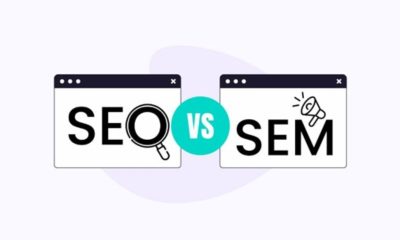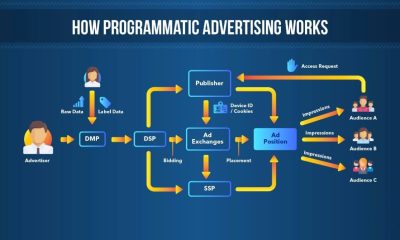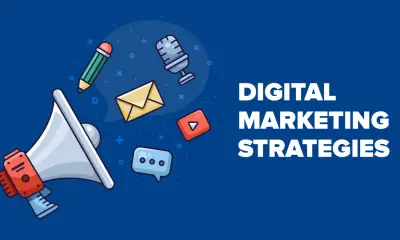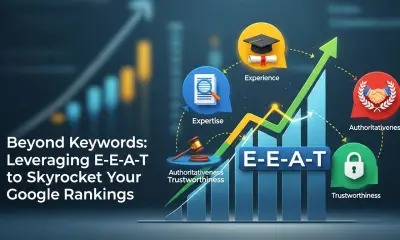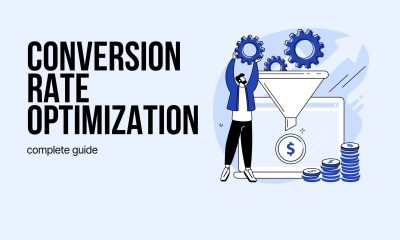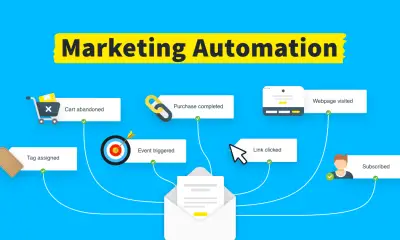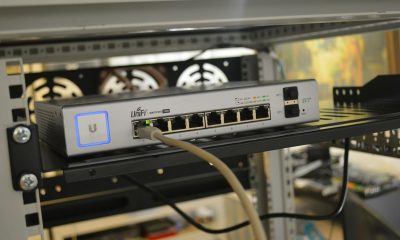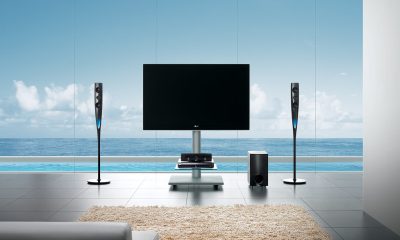Guides
SEO vs SEM: Key Differences Explained

Introduction
In today’s digital landscape, businesses aim to enhance their online visibility to attract more customers. Two primary strategies for achieving this are Search Engine Optimization (SEO) and Search Engine Marketing (SEM). While both aim to increase a website’s visibility on search engine results pages (SERPs), they differ significantly in approach, cost, and time to see results. Understanding these differences is crucial for businesses to develop an effective digital marketing strategy that aligns with their goals and resources.
What is SEO?
Search Engine Optimization (SEO) is the process of optimizing a website to rank higher in the organic (non-paid) search results of search engines like Google. The goal is to increase the quantity and quality of traffic to a website through organic search engine results.
Key Components of SEO
-
On-Page SEO: This involves optimizing individual web pages to rank higher and earn more relevant traffic. Key elements include:
-
Keyword Optimization: Researching and using relevant keywords that users are likely to search for.
-
Content Quality: Creating high-quality, informative, and engaging content that meets the needs of users.
-
HTML Tags: Proper use of title tags, meta descriptions, and header tags to help search engines understand the content of a page.
-
URL Structure: Ensuring URLs are clean, descriptive, and include relevant keywords.
-
-
Off-Page SEO: Activities conducted outside the website to improve its position in search rankings. This primarily involves:
-
Backlink Building: Acquiring high-quality backlinks from reputable websites to increase domain authority.
-
Social Media Engagement: Promoting content through social media platforms to drive traffic and brand awareness.
-
-
Technical SEO: Ensuring that a website meets the technical requirements of modern search engines. This includes:
-
Site Speed: Optimizing website loading times to improve user experience and search rankings.
-
Mobile-Friendliness: Ensuring the website is responsive and provides a good user experience on mobile devices.
-
Secure Sockets Layer (SSL): Implementing HTTPS to secure user data and improve trustworthiness.
-
XML Sitemaps and Robots.txt: Helping search engines crawl and index the website efficiently.
-
Benefits of SEO
-
Cost-Effective: Organic traffic is free, and the long-term benefits can outweigh the initial investment in SEO efforts.
-
Credibility and Trust: Users tend to trust organic results more than paid advertisements.
-
Sustainable Results: Once a website achieves high rankings, it can maintain them with regular updates and quality content.
Challenges of SEO
-
Time-Consuming: Achieving high rankings can take time, often several months.
-
Constant Algorithm Changes: Search engines frequently update their algorithms, requiring ongoing adjustments to SEO strategies.
-
High Competition: Popular keywords can be highly competitive, making it challenging to rank.
What is SEM?
Search Engine Marketing (SEM) refers to the practice of gaining website traffic through paid advertising on search engines. SEM encompasses various paid strategies, including Pay-Per-Click (PPC) advertising, display ads, and paid inclusions.
Key Components of SEM
-
PPC Advertising: Advertisers bid on keywords, and their ads appear on the search engine results pages when users search for those terms. Advertisers pay each time a user clicks on their ad.
-
Display Advertising: Visual-based ads that appear on websites within the search engine’s network, aiming to increase brand awareness and drive traffic.
-
Paid Inclusions: Paying search engines to include a website in their index, ensuring it appears in search results.
Benefits of SEM
-
Immediate Results: Ads can appear on SERPs almost instantly after the campaign is launched.
-
Targeted Advertising: Advertisers can target specific demographics, locations, and devices to reach their desired audience.
-
Budget Control: Advertisers can set daily or campaign budgets to control spending.
Challenges of SEM
-
Cost: Depending on the competitiveness of the keywords, SEM can become expensive.
-
Temporary Traffic: Once the advertising budget is exhausted, the traffic stops unless the campaign is renewed.
-
Ad Blindness: Users may ignore paid ads, focusing only on organic results.
SEO vs. SEM: A Comparative Overview
| Aspect | SEO | SEM |
|---|---|---|
| Cost | Low (organic traffic) | High (paid advertising) |
| Time to Results | Long-term (months) | Short-term (immediate) |
| Sustainability | Sustainable with ongoing effort | Temporary unless continuously funded |
| Credibility | High (organic results trusted) | Lower (users may distrust ads) |
| Control | Limited (depends on algorithms) | High (full control over ads) |
| Traffic Quality | High (targeted organic visitors) | Can be targeted but depends on ad quality |
When to Use SEO vs. SEM
-
Use SEO:
-
When aiming for long-term visibility and credibility.
-
If operating on a limited budget.
-
When targeting users who prefer organic search results.
-
-
Use SEM:
-
When immediate visibility is needed.
-
For time-sensitive promotions or events.
-
To test keywords and landing pages before investing in SEO.
-
Combining SEO and SEM for Optimal Results
Integrating both SEO and SEM can provide a comprehensive digital marketing strategy. While SEO builds long-term organic traffic, SEM can drive immediate traffic and provide valuable data for refining SEO efforts. By analyzing SEM performance, businesses can identify high-performing keywords and optimize their SEO strategies accordingly.
Read More: Buyer Personas Made Simple
Conclusion
Both SEO and SEM are integral components of a successful digital marketing strategy. SEO offers long-term benefits by building organic traffic and credibility, while SEM provides immediate visibility and control over advertising efforts. By understanding the strengths and limitations of each, businesses can effectively leverage both strategies to enhance their online presence and achieve their marketing objectives.
FAQs
-
What is the main difference between SEO and SEM?
-
SEO focuses on optimizing a website to rank higher in organic search results, while SEM involves paid advertising to increase visibility on search engine results pages.
-
-
Which is more cost-effective, SEO or SEM?
-
SEO is generally more cost-effective in the long run as it focuses on organic traffic, whereas SEM requires ongoing investment in paid advertising.
-
-
Can SEO and SEM be used together?
-
Yes, combining SEO and SEM can provide a comprehensive strategy, leveraging the long-term benefits of SEO with the immediate visibility of SEM.
-
-
How long does it take to see results from SEO?
-
SEO is a long-term strategy, and it can take several months to see significant improvements in search rankings and traffic.
-
-
Is SEM suitable for small businesses with limited budgets?
-
SEM can be effective for small businesses, but it’s essential to manage budgets carefully and target specific keywords to ensure a positive return on investment.
-
-

 Gadgets2 years ago
Gadgets2 years agoDoes Nest Thermostats Contain Cameras Or Microphones? Is It Safe For you?
-

 Guides1 year ago
Guides1 year ago10 Best Apps To Control All Your Smart Home Devices.
-

 Gadgets2 years ago
Gadgets2 years agoWhat Is The Purpose Of Red Button On The SimpliSafe Keypad?
-

 Gadgets2 years ago
Gadgets2 years agoComplete Guide About Equalizer settings for Samsung-Soundbar
-

 Accessories2 years ago
Accessories2 years agoBlink Camera’s Temperature Sensor Settings, and More
-

 Solutions3 years ago
Solutions3 years agoWhy is My Samsung TV Picture So Dark? Exploring the Possible Causes
-

 Gadgets3 years ago
Gadgets3 years agoFitbit Symbols Meaning: What Do The Fitbit Icons Mean?
-

 Accessories2 years ago
Accessories2 years agoCan Siri Control Samsung Televisions And Are Samsung TVs Homekit Compliant?






